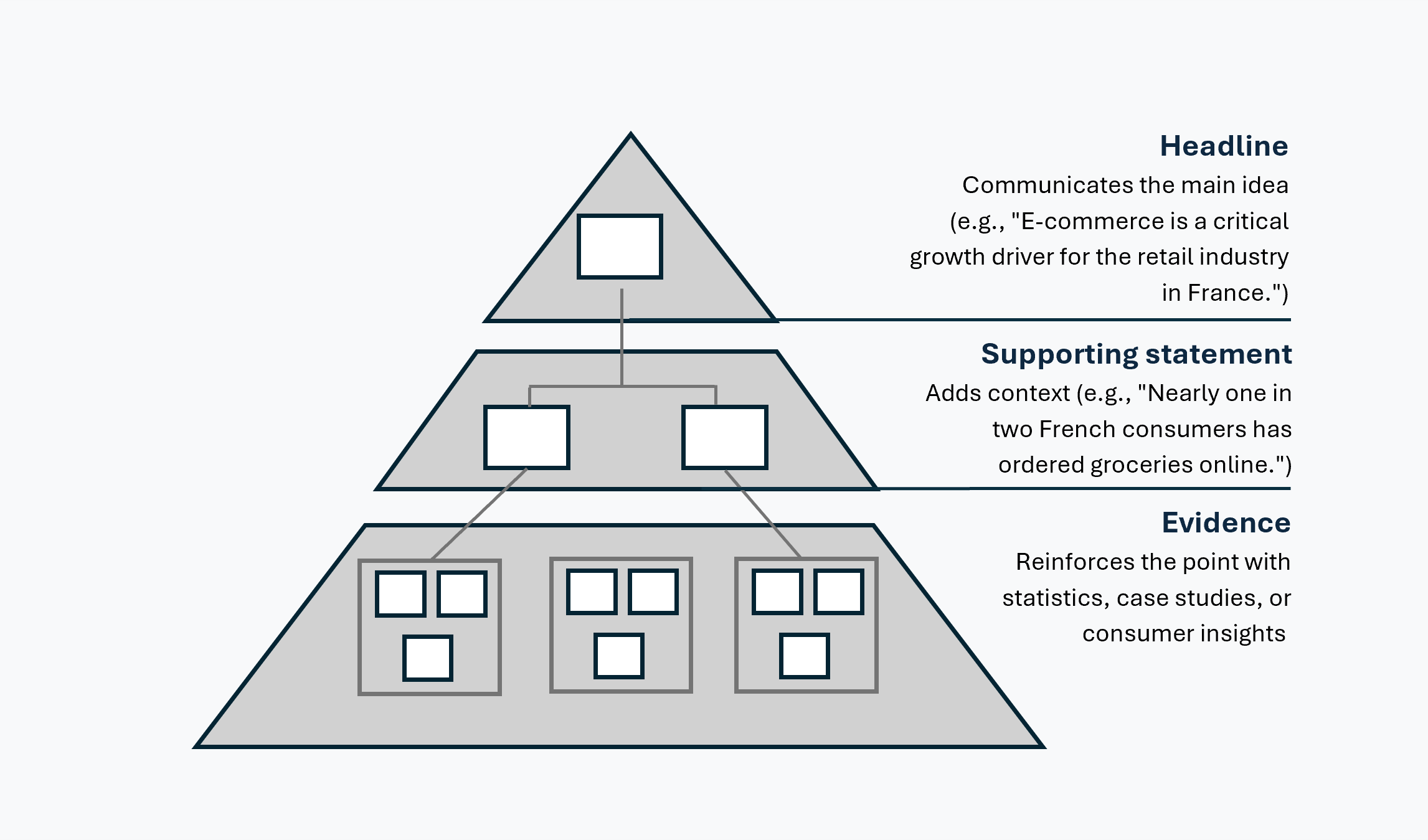Effective communication leads to stronger persuasion. Whether spoken or written, clarity and impact make all the difference. A well-structured message, active listening, and clear expression can transform an ordinary interaction into a valuable opportunity.
Adjust the tone, the vocabulary, the format, and channel
Capitalize on informal moments and remain true to yourself
« Effective communication is about meeting people where they are, not where you would like them to be »
Matt Abrahams
In a professional setting, the quality of communication and relationships often determines the success of a project or the cost of a misunderstanding. Whether interacting with colleagues, partners, or clients, communication is more than just exchanging information. It helps to:
- Structure relationships,
- Influence perception,
- Ensure alignment around shared goals.
Based on our experience in various industries, this article highlights key principles for clear and effective communication, with the ultimate goal of fostering collaboration and building trust with stakeholders.
Preparing for an Interaction: Understanding Your Audience and Adapting Your Approach
Matt Abrahams, a communication expert in public speaking and presentations, emphasizes the importance of understanding your audience : their language, seniority, expertise, expectations, frustrations, and swiftly grasp their personality and approach to collaboration. To communicate effectively, it's crucial to adjust:
- Tone: Cordial, reassuring, friendly, etc.
- Channel and format: Verbal, email, Teams, PowerPoint, visuals, etc.
- Vocabulary: Certain industries or departments have specific language preferences, and some words may be inappropriate in certain contexts. Additionally, excessive use of industry jargon or “Franglais” can alienate some audiences..
"Effective communication is about meeting people where they are, not where you want them to be." – Matt Abrahams
For instance, when speaking with professionals outside your field, simplifying terminology and using visual aids can enhance understanding. In executive meetings, conciseness is key, whereas technical teams may require more detailed explanations and specialized terminology.
It’s also common to have a diverse range of profiles in a discussion. Taking pauses to summarize key points and ask questions helps gauge engagement, understanding, and ensure that perspectives remain aligned.
In short, these essential practices foster effective communication by ensuring the right level of clarity and, ultimately, building trust with your audience.
Prioritizing Clarity in Written and Verbal Communication
"If you can't explain it simply, you don't understand it well enough." – Albert Einstein
Whether drafting an email, leading a presentation, or participating in a virtual meeting, clear and concise messaging is key to avoiding misunderstandings and reaching consensus. Overloading information or using complex jargon can dilute your message and lose your audience’s attention. According to Matt Abrahams, simplicity and structured messaging help listeners focus on key takeaways. One effective approach is the pyramid structure:

Incorporating visuals, icons, or diagrams makes content more engaging and digestible.
It enables audiences to quickly grasp the core message.
Once clarity is achieved, the next challenge is maintaining your audience’s attention.
Being grounded in the present moment and fostering active listening
In a world full of distractions, being fully present is crucial for meaningful communication. This means giving your full attention, rather than mentally preparing a response while someone else is speaking. Active listening enhances understanding and retention.
"Being in the moment frees you from biases and expectations, allowing you to respond more effectively." – Matt Abrahams
Five Tips for Staying Engaged and Practicing Active Listening:
- Overcoming Distractions in Virtual Meetings
Virtual meetings come with challenges—email notifications, multitasking, background distractions. However, maintaining eye contact and focusing on meeting objectives is essential. Turning on the camera humanizes interactions, reinforces nonverbal communication, and fosters engagement.
2. Acknowledging Others' Contributions
Even if a topic isn't directly relevant to you, acknowledging others' contributions strengthens team cohesion. Paraphrasing or summarizing someone’s statement shows you’ve genuinely listened and encourages active participation.
This active listening process gives everyone the opportunity to feel heard, thereby strengthening group cohesion and mutual support.
3. Taking Time to Listen Without Rushing to Judge
Preconceived notions can limit understanding. Instead of anticipating your response while someone is speaking, allow yourself to fully process their points.
This approach helps to:
- Gain a deeper understanding of their perspective, et le point de vue de son interlocuteur,
- Ask relevant follow-up questions,
- Formulate more thoughtful responses ,
- Encourage open and productive discussions.
4. Mastering the Art of Questioning
The ability to ask relevant questions is a cornerstone of communication.
"The right questions clarify expectations and advance the conversation." – Matt Abrahams
Asking open-ended questions can:
- Clarify goals and expectations,,
- Encourage creative thinking,,
- Ensure alignment and comprehension,
- Facilitate decision-making,
- Make interactions more dynamic and collaborative.
5. Embracing Silence as a Constructive Pause
Silence may feel awkward, but it creates space for reflection and thoughtful responses. In meetings, taking a moment before answering enhances clarity and engagement.
In summary, pauses are an excellent way to reconnect with the present moment, your understanding and clarify if needed..
Cultivating Authenticity and Transparency to Build Strong Relationships
In high-performance environments, authenticity is a valuable asset that fosters trust.
"We often think effective communication is about impressing people, but in reality, it’s about creating resonance." – Matt Abrahams
Two Key Principles:
Embracing Informal Conversations
Casual interactions such as coffee breaks, lunches, post-meeting chats offer opportunities for genuine and transparent communication. Making the most of these moments is essential for building deeper connections with your teams, partners, or clients.
Being Authentic
Consistency between words and actions fosters credibility and trust. Authenticity prevents future contradictions and strengthens professional relationships.
Conclusion
By cultivating presence, clarity, adaptability, authenticity, and strategic questioning, we can maximize our communication impact in any setting. Implementing these principles thoughtfully fosters stronger collaborations:
"Communication is more than just transmitting information ; it’s about engagement."
However, challenges such as communication breakdowns or conflicts may still arise. Addressing these requires additional skills in conflict resolution…
For more communication insights, explore Matt Abrahams’ podcast series.
